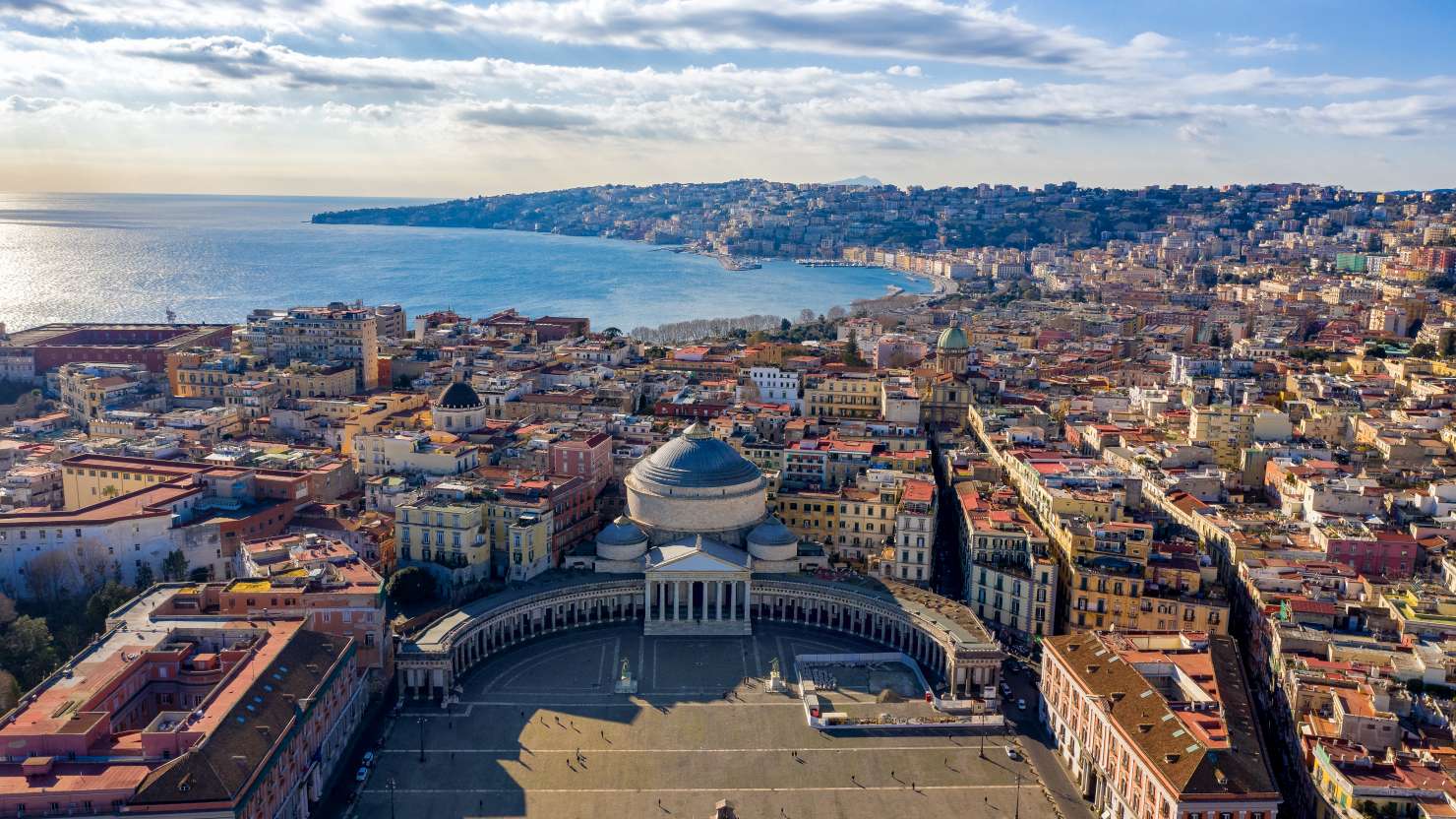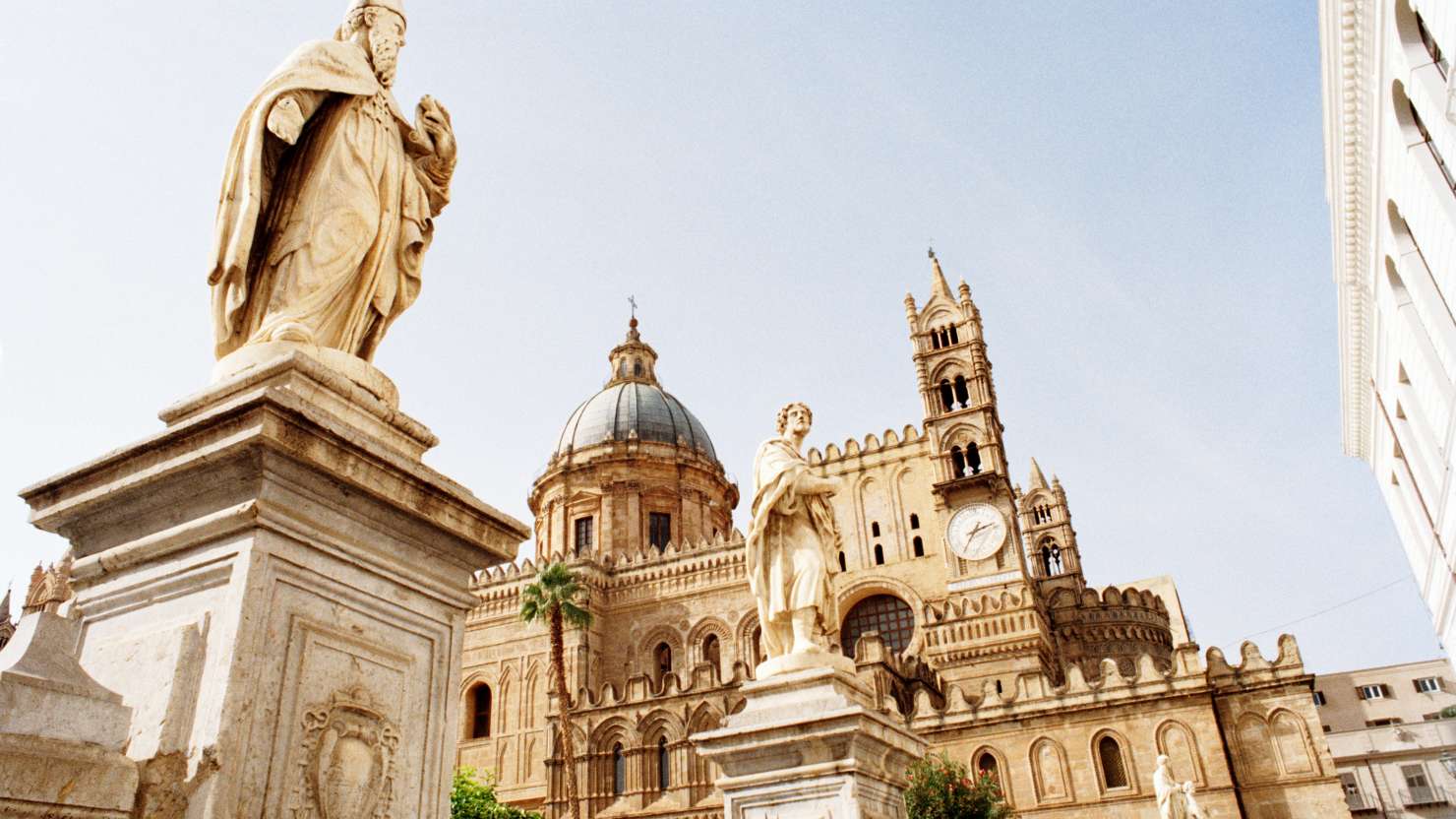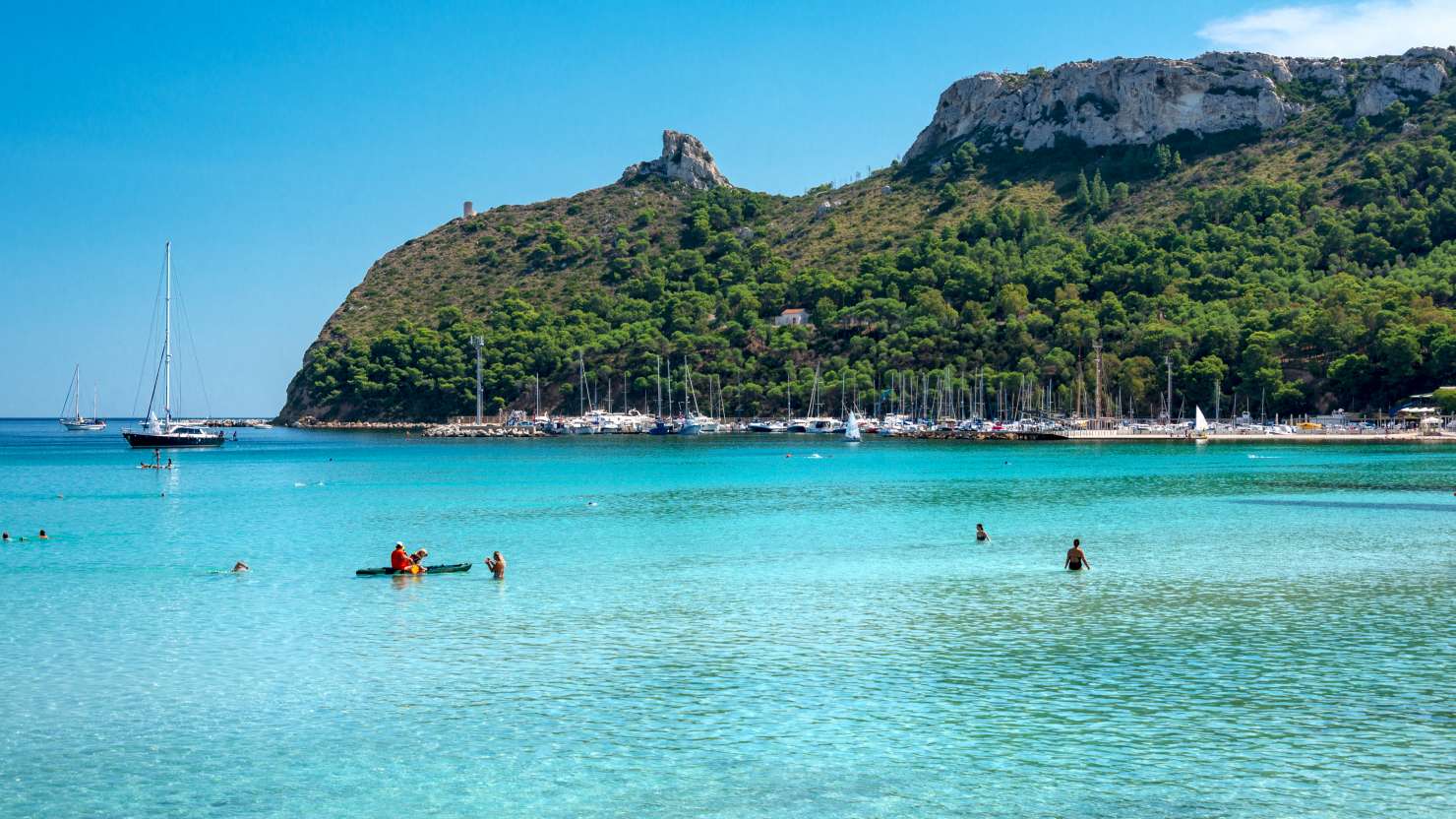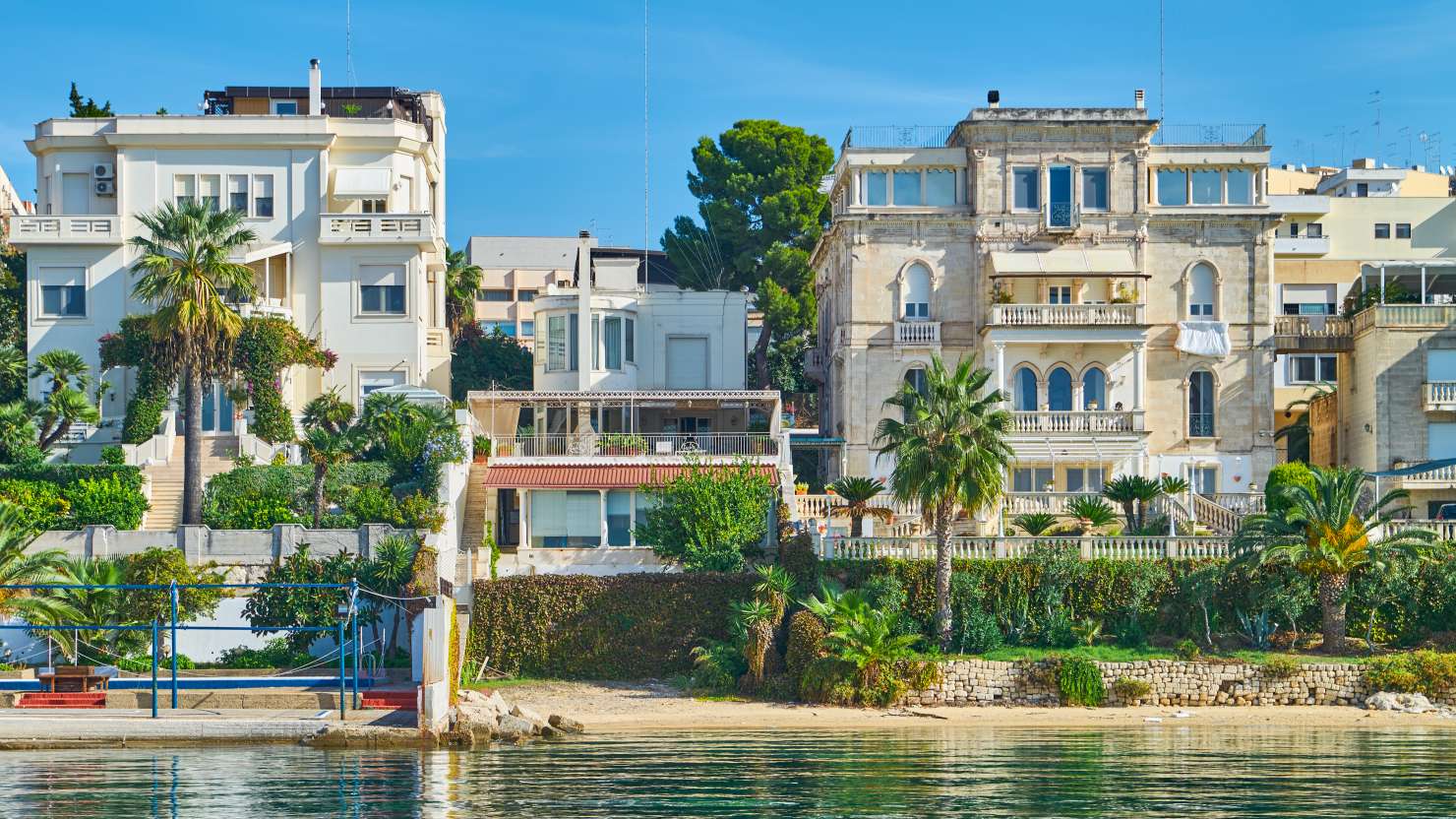2026 Travel Hotlist
Explore more on the Mediterranean

Whether you’re strolling through historic ruins or sipping espresso in a bustling piazza, these Southern Italian ports of call will steal your heart and lure you back time and time again.
There are few countries that wrap you up quite like Italy. It clings to you, with the scent of espresso and sea air, the echo of church bells and roar of Vespas, the touch of sun-warmed stone and market-fresh peaches. Wherever and whenever you’re gliding into port in Southern Italy, it’s more than a destination. It’s a mood: la dolce vita.
Hot and hectic, Naples is Italy at its most unfiltered. But still, you’ll fall in love: laundry-strung alleyways, Baroque churches next to neon-lit pizzerias and scooters zipping in and out of traffic.
Start in the Spaccanapoli, the narrow spine that slices through the historic centre. Here, you’ll pass notable churches including Chiesa del Gesù Nuovo and the Complesso Monumentale di Santa Chiara, as well as the Sansevero Chapel, crumbling palazzi, corner bakeries serving sfogliatelle (crisp little pastries filled with sweet cream), and workshops where craftsmen still carve nativity figures by hand. The Archaeological Museum is a must for lovers of Pompeii and Herculaneum, which are both easy day trips.
Then there’s the pizza. The birthplace of this now-global food, Naples serves it blistered and chewy, with just three ingredients and zero fuss. Try Da Michele for the classic, or pop into a quieter neighbourhood pizzeria like Starita. Escape the madness on a funicular to Vomero for elegant views and quiet cloisters, or take a ferry to Procida, all pastel houses and timeless charm. Discover Naples.

To walk through Palermo is to time-travel: from Phoenician traders to Norman kings, Arab emirs to Spanish viceroys, with every era leaving its mark on the city’s tangled, sun-soaked streets. Nowhere captures this fusion better than the Palatine Chapel, a golden marvel inside the Norman Palace, where Arab, Norman and Byzantine influences shimmer side by side. But the city’s soul lives in its markets – try Ballarò, Capo, and Vucciria – a full-blown assault on the senses with fishmongers hawking the catch of the day, basil and lemons piled high, and the singsong of Sicilian dialect echoing down narrow alleyways, with smoke from sizzling panelle (chickpea fritters) filling the air. Palermo invented street food before it was trendy, and it’s still best eaten with your hands and a paper napkin in your pocket.
Palermo has always existed on the margins – of Italy, of Europe – and that outsider status has bred a fierce independence. It’s a city marked by struggle, resilience and rebirth. From the Mafia-scarred years (still a sensitive topic) to today’s slow but determined regeneration, Palermo has never lost its soul. Wander the Kalsa district for a glimpse of its bohemian side: crumbling palazzi turned into artists’ studios and open-air film screenings in abandoned courtyards. Dip into the Orto Botanico (botanical garden), a lush, unexpected oasis with rare tropical species, or take a city bus to Mondello Beach, with its retro bathing huts, for a swim beneath Art Nouveau villas and a mountain-framed horizon. Discover Palermo.

Sardinia often gets overshadowed by Sicily, but Cagliari, the island’s capital, is a delicious surprise. Begin in the Castello district, where narrow lanes wind past faded palaces and suddenly open onto dizzying viewpoints. The Museo Archeologico reveals Sardinia’s mysterious Nuragic past, while the nearby Roman amphitheatre reminds you that every layer here has depth. Downhill, the marina is buzzy and full of bars. Try a glass of vermentino with local bottarga (salted mullet roe), or head to the market at San Benedetto, one of the largest in Italy, where fishmongers shout over towers of tuna and sea urchins. To really feel the local rhythm, spend a few hours at Poetto Beach, a wide arc of sand just a bus ride away. It’s where Cagliaritani go to swim, eat fried doughnuts and gossip in the sun. Discover Cagliari.

Set on the glittering Ionian Sea, where the ‘heel’ of Italy meets the ‘boot’, Taranto is a working port city with a rustic edge. But delve a little deeper and you’ll find a city full of historic gems. There are two distinct parts – the Borgo Antico and the New Town. The former is contained on a small island in the harbour and is home to centuries-old reminders of Taranto’s history as a Mediterranean stronghold. The Ponte Girevole bridge connects Borgo Antico with New Town, where you’ll find the National Archaeological Museum (MArTA) and the Lungomare Vittorio Emanuele III coastal walkway.
While Taranto has enough to keep you entertained, there are unmissable otherworldly adventures to be had in the surrounding Apulia region. Enchanting Matera is one of the world’s oldest human settlements, built entirely of stone. The reason to visit is the Sassi – nearly 5,000 cave-homes built into an ancient river canyon. In Lecce, it’s easy to imagine yourself as a 17th-century aristocrat as you swan through its winding, cobblestone streets lined with biscuit-coloured buildings and bursting with Baroque and Rococo treasures. But if Apulia has an icon, it’s got to be the trulli – the small stone huts with cone-shaped roofs that are reminiscent of fairytale gnome houses. You’ll find them concentrated in the charming village of Alberobello. Discover Taranto.

of
Don’t miss out! Sign up for latest news, offers and competitions from P&O Cruises.